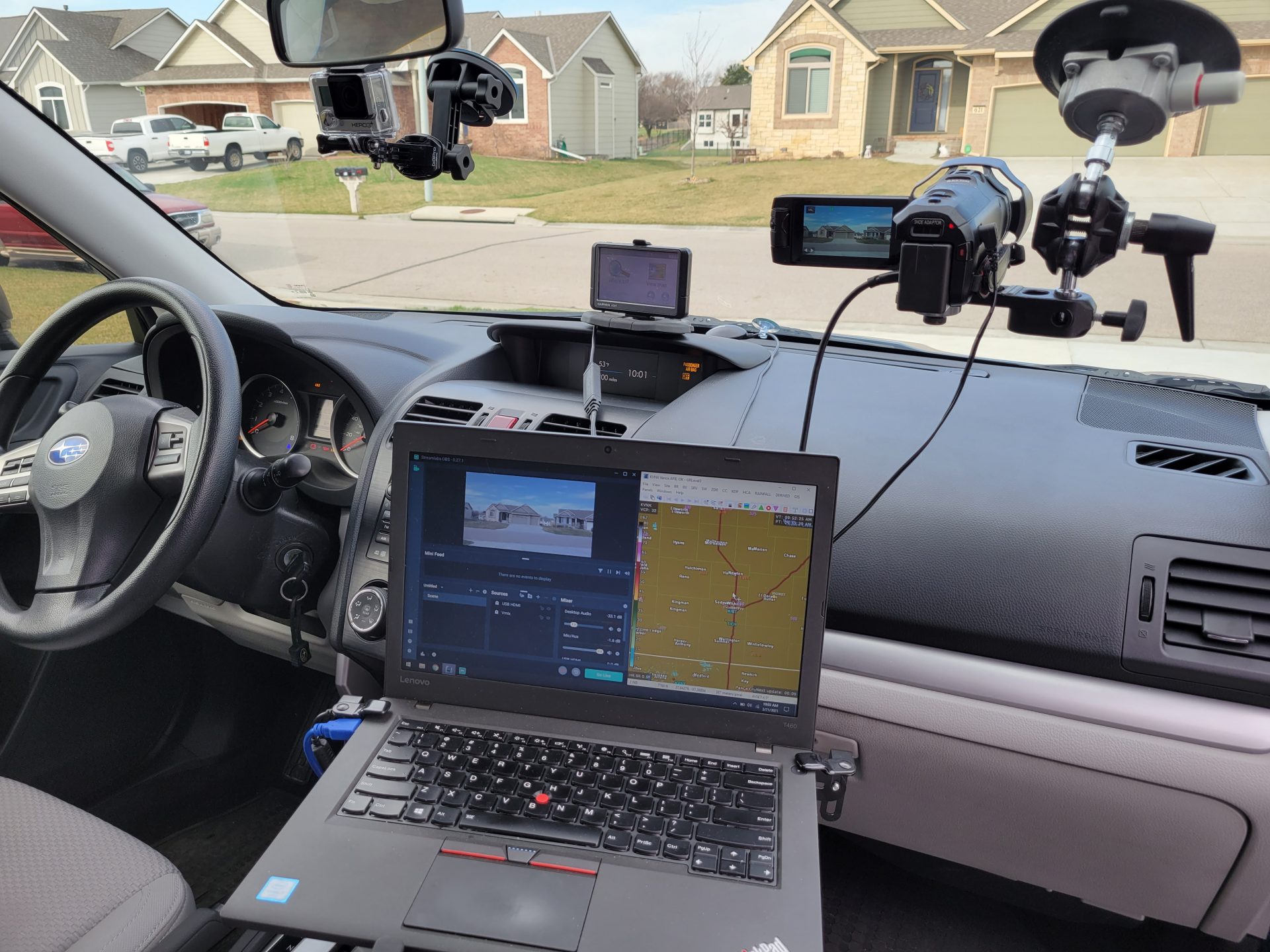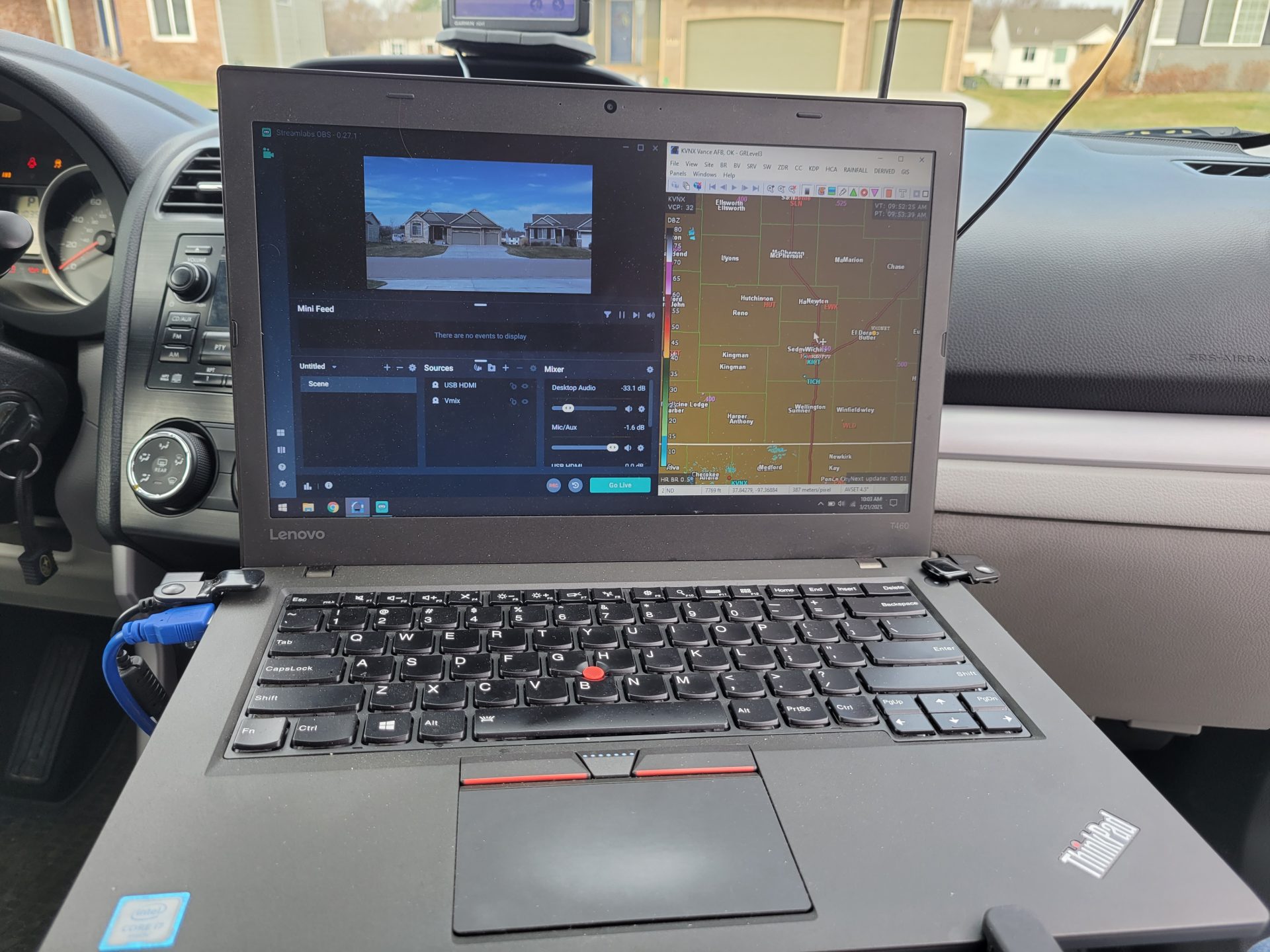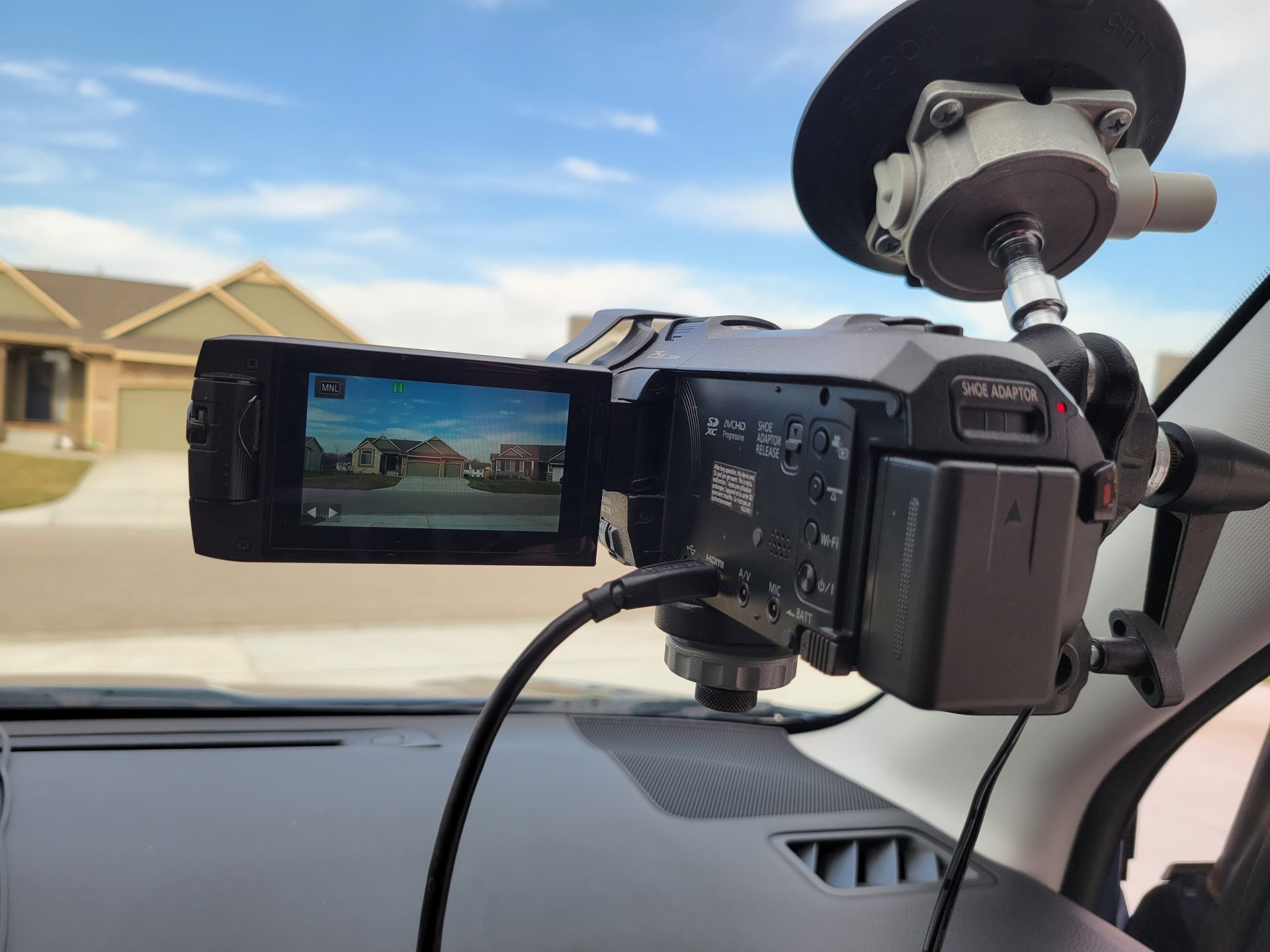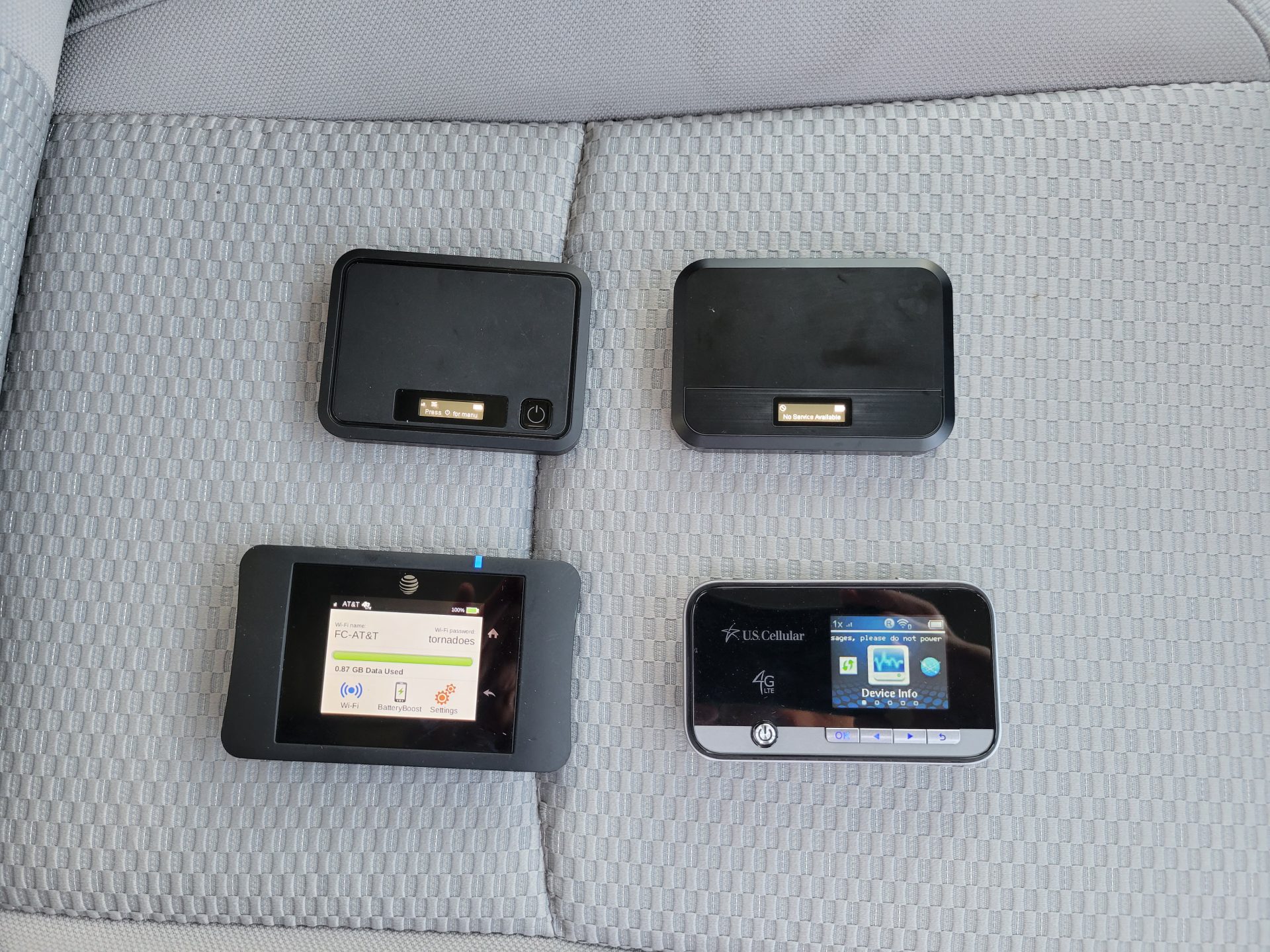Published on
I often get asked if I chase in an armored tank or have a bunch of antennas and gizmos in my vehicle. And for me, that answer is no. I like to keep things simple and as low-tech as possible, mostly because in an highly energized lightning storm, equipment tends to fail.
I know many chasers that arm their vehicles with all sorts of flashy weather stations and extras – and there is nothing wrong with doing so. I can see the benefit of having a weather station on-board for real time wind, temperature and dew point information. However, I am usually within 15 miles of a mesonet station that gives me the same information without dragging down my fuel economy.

Let’s cover the essential equipment. As I enjoy streaming live video, a camera and a laptop are a must. I stream using a Panasonic WX-970 with a mini HDMI output that goes directly into the laptop. This allows for the ability to stream to the world wide web. The laptop is a Lenovo ThinkPad with a solid-state hard drive. On a chase several years ago, we hit a big bump and the hard drive crashed, right in the middle of a chase. Because of that experience, I switched to a solid-state drive with no mechanically moving parts. SSD’s can stand the test of time (and bumpy roads) a lot better than standard hard drives.
I also use a standard Garmin GPS to show our location as well as road options, and a USB GPS that plugs into the laptop that will show my exact location on a radar program like GRLevel3.



So, how do you get the video from your laptop to the world wide web? I use a number of cellular data devices. Each one covers a certain region of Tornado Alley with some of them overlapping coverage. For example, Nebraska has excellent data coverage using Verizon and US Cellular, but AT&T doesn’t have much native coverage. For this area, I would make sure to have both the Verizon and US Cellular cards on and ready to stream.
In Kansas, US Cellular only covers the eastern 1/2 of the state, so having access to the Verizon, AT&T and a couple of local providers is essential. In my mind – the more towers I have access to, the better reliability my stream will have. Having multiple cellular devices activated simultaneously can get expensive, but it’s a necessary expense in my opinion.

It goes without saying that you also need a vehicle to chase in. I chose a Subaru Forester for several reasons. It’s economical on gas and is all-wheel drive, which has been beneficial in many situations. It’s also a bit more rugged than the average vehicle and has higher clearance, which can be useful in situations of driving through debris.
On the windshield of the Forester, I have a Go-Pro mounted to capture a wide-angle of the storms I encounter. The video captured from the Go-Pro has been used in many videos on YouTube.
I also use a cellular booster, which is hidden under the seat. The booster features a small antenna on the roof that helps keep a signal in remote areas.
Each chaser has their own style of chasing, as well as own sense of what equipment is necessary. I try to keep my setup as minimal as possible without a lot of extras. The more tech you have, the more things that can (and will) fail!


Community Comments
There are no comments on this post
Want to leave a comment? Join our community → OR Login →